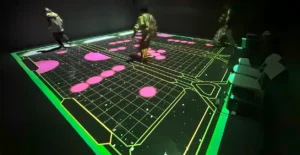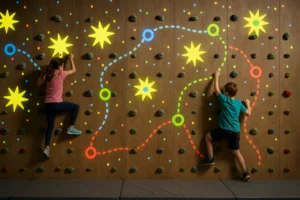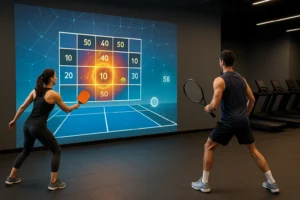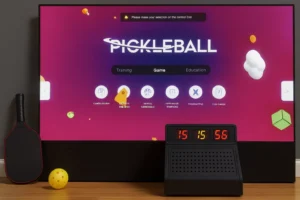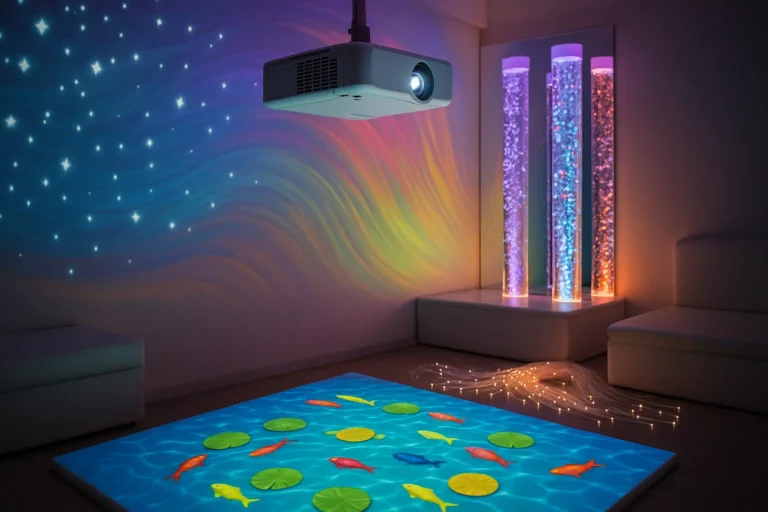Stepping into a World of Immersive Fun: An Introduction to Interactive Floor Game Rooms
Imagine a space where the floor transforms into a vibrant, interactive canvas, beckoning you to step into a realm of captivating games and experiences. This is the enchanting world of interactive floor game rooms, where physical movement and digital technology converge to create a captivating blend of entertainment and learning.
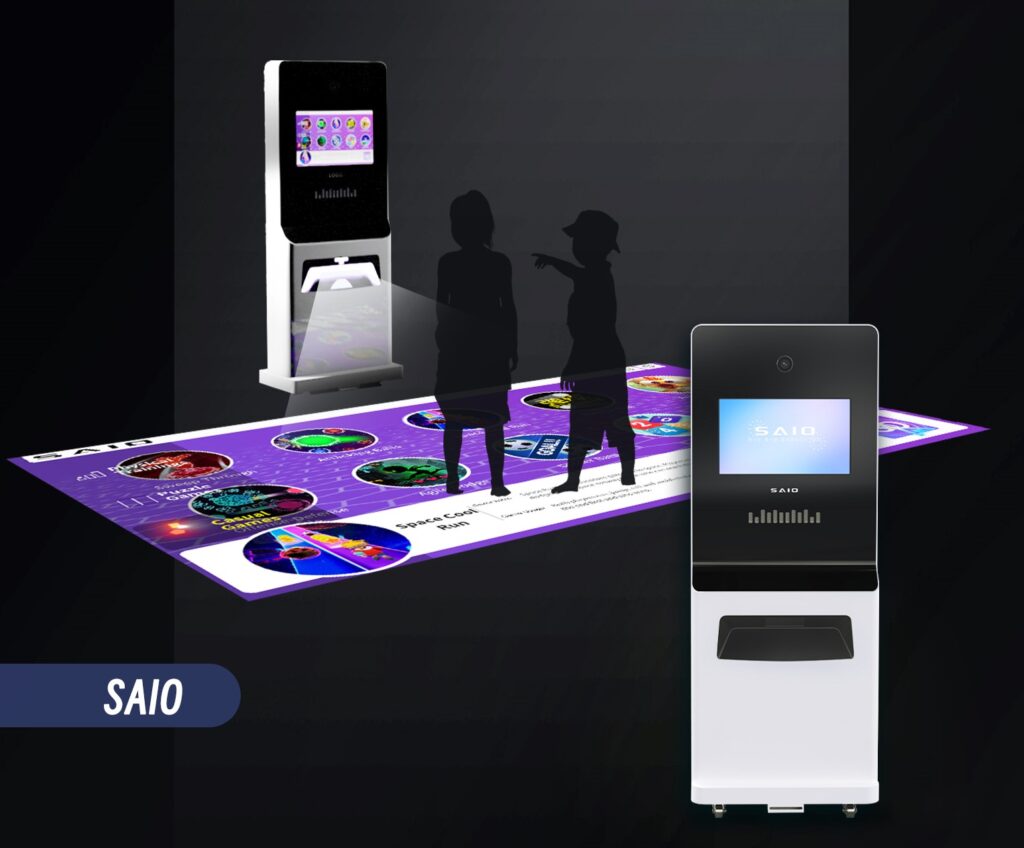
A Canvas of Endless Possibilities
SAIO Interactive floor game rooms employ high-tech projection systems to transform ordinary floors into captivating play areas. These systems project engaging visuals, sounds, and animations onto the surface, creating a dynamic environment that responds to the movements of players.
Unleashing the Power of Movement
Unlike traditional video games where interaction is limited to button presses and joystick maneuvers, interactive floor game rooms encourage physical engagement. Players become active participants in the virtual world, their movements triggering responses and shaping the gameplay. This immersive experience fosters creativity, coordination, and a sense of accomplishment.
Challenges of Interactive Floor Projector Game Room
- Projection and Tracking Issues: The accurate projection of interactive elements onto the floor and the seamless tracking of player movements are crucial for the successful operation of these game rooms. However, factors like ambient light, uneven surfaces, or hardware malfunctions can lead to misaligned projections, inaccurate tracking, or even complete system failures. This can disrupt gameplay, frustrate players, and potentially cause safety hazards if players interact with misaligned projections or lose tracking.
- Software and Hardware Maintenance: Interactive floor projector game rooms rely on complex software and hardware systems that require regular maintenance and updates to ensure optimal performance. Failure to maintain these systems can lead to glitches, crashes, or compatibility issues with new software or hardware. This can disrupt gameplay, cause frustration among players, and tarnish the reputation of the game room.
- Physical Safety Concerns: Interactive floor games often involve physical movement, and the presence of a large, projected surface can lead to unintentional falls or collisions if players are not careful. Proper signage, designated play areas, and clear instructions can help mitigate these risks, but careful supervision is always essential.
- Accessibility and Inclusiveness: Interactive floor games may not be fully accessible to individuals with disabilities, such as visual impairments or mobility limitations. Designing games that can be enjoyed by a wider range of players requires careful consideration of accessibility features and ensuring that all players can participate safely and comfortably.
- Content Variety and Scalability: The success of interactive floor game rooms often hinges on the availability of engaging and diverse content. A limited selection of games can quickly become repetitive and lose appeal for players. Additionally, scaling up the operation to accommodate larger crowds or accommodate different age groups may require additional hardware, software, or game development.
- Cost Considerations: Interactive floor projector game rooms can be relatively expensive to install and maintain, and the ongoing costs of hardware replacement, software updates, and content development can strain budgets. Careful planning and budgeting are essential for ensuring the long-term viability of these attractions.
- Balancing Entertainment and Learning: While interactive floor games can promote physical activity and engagement, it’s important to strike a balance between entertainment and learning. Games should be designed to incorporate educational elements or promote cognitive skills while still being enjoyable for players of all ages.
- Adapting to Technological Advancements: The technology behind interactive floor projector games is constantly evolving, and keeping up with the latest advancements is crucial to maintain the appeal and functionality of these game rooms. Requiring frequent hardware and software upgrades can add to the overall cost and maintenance requirements.
- Managing Player Expectations and Behavior: Interactive floor game rooms can attract a diverse range of players, and managing expectations and behavior can be challenging. Setting clear rules, providing appropriate supervision, and addressing disruptive behavior are essential to ensure a safe and enjoyable experience for all.
- Ensuring Long-Term Appeal and Relevance: The novelty of interactive floor projector games can wear off over time, and it’s important to continuously refresh the content, add new features, and adapt to changing trends to maintain player interest and keep the attraction fresh.
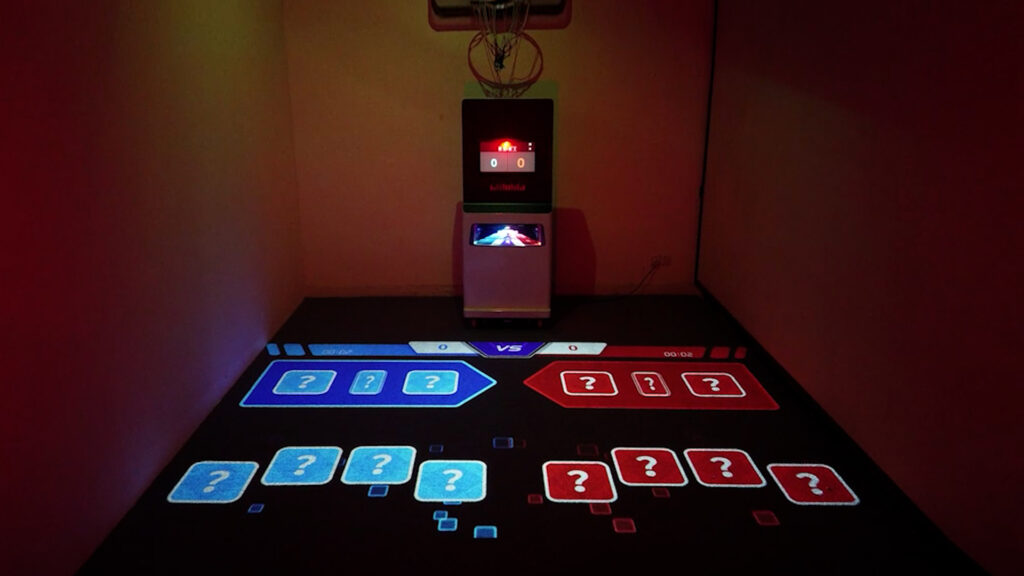
Benefits of Interactive Floor Projector Game Rooms:
- Enhanced Physical Activity: Interactive floor games encourage physical engagement, motivating players to move, jump, and dance. This can help combat a sedentary lifestyle and promote overall fitness.
- Immersive Learning Experiences: Interactive floor games can be designed to incorporate educational elements, making learning fun and engaging. Children can learn about various subjects, from science and math to language and geography, all while having fun.
- Social Interaction and Teamwork: Interactive floor games often encourage teamwork and collaboration, fostering social interaction and communication skills among players.
- Sensory Development: The vibrant visuals, sounds, and animations of interactive floor games can stimulate the senses, particularly in young children.
- Adaptability and Versatility: Interactive floor games can be tailored to different age groups, interests, and skill levels, making them suitable for a wide range of settings, such as schools, community centers, hospitals, and even homes.
Effectiveness of Interactive Floor Projector Game Rooms:
A study conducted by researchers at the University of California, Berkeley, found that interactive floor games were effective in promoting physical activity and reducing screen time among children. The study involved a group of children who participated in interactive floor game sessions for 30 minutes, three times a week, over a six-week period. The results showed that the children who participated in the interactive floor game sessions had significantly higher levels of physical activity and lower levels of screen time compared to the control group.
Another study, conducted by researchers at the University of Queensland, Australia, found that interactive floor games were effective in improving cognitive skills among children. The study involved a group of children who participated in interactive floor game sessions for 20 minutes, twice a week, over a four-week period. The results showed that the children who participated in the interactive floor game sessions had significant improvements in memory, attention, and problem-solving skills compared to the control group.
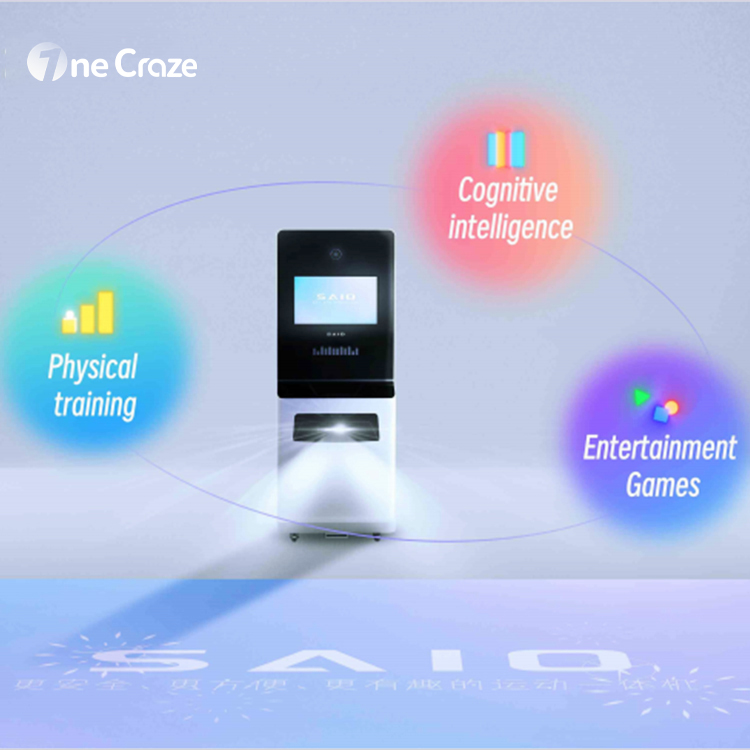
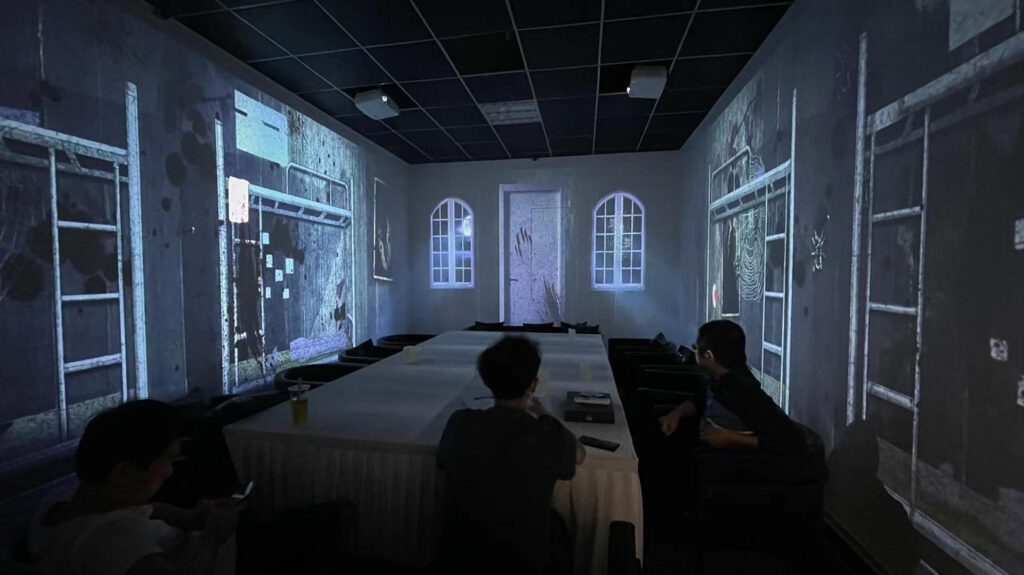
Case Studies and Testimonials:
- Case Study: A school in New York City installed an interactive floor projector game room and found that it quickly became a popular hangout for students of all ages. The game room was used during recess, lunchtime, and after-school programs. Students reported that they enjoyed the interactive games and found them to be a fun and engaging way to stay active.
- Testimonial: A parent of a child with autism spectrum disorder (ASD) shared that their child had difficulty interacting with other children and engaging in physical activity. However, after participating in interactive floor game sessions, the parent reported that their child was more engaged with playing with other children and was more willing to participate in physical activities.



